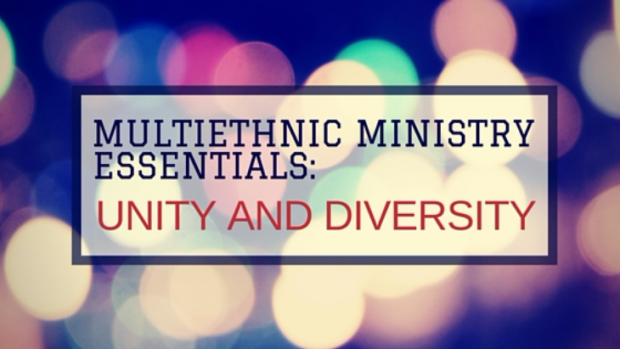.jpg)
I’m a comic book fan, and my favorite comics are the team-ups. The Justice League, Teen Titans, the Avengers, the X-Men. It’s fun when superheroes partner together, combine powers, build off of each other’s abilities.
The X-Man Colossus has skin that turns into metal, and Wolverine has blades in his hands. Both are good in close combat, but neither one has a range attack. But they have a move called the “fastball special,” where Colossus picks up Wolverine and throws him, like a missile. They do more together than they can on their own.
1 Corinthians 12 has always been one of my favorite passages. Paul is describing the church as one body with many parts, working together. Here's an excerpt from verses 12-14:
Just as a body, though one, has many parts, but all its many parts form one body, so it is with Christ. For we were all baptized by one Spirit so as to form one body—whether Jews or Gentiles, slave or free—and we were all given the one Spirit to drink. Even so the body is not made up of one part but of many.
Experiencing the Body of Christ
We are God’s people, from every tribe and tongue and nation. And these are exciting times for the global church.
 Mark Noll’s The New Shape of World Christianity describes how today there are more Christians in China than in all of Europe, more Anglicans in Nigeria than in North America, and more Pentecostals in Brazil than in the US. Soong-Chan Rah’s The Next Evangelicalism talks about how North American Christianity is being revitalized by immigrant churches from around the world.
Mark Noll’s The New Shape of World Christianity describes how today there are more Christians in China than in all of Europe, more Anglicans in Nigeria than in North America, and more Pentecostals in Brazil than in the US. Soong-Chan Rah’s The Next Evangelicalism talks about how North American Christianity is being revitalized by immigrant churches from around the world.
Different parts of the body show us different things. Celebration and vibrant worship. Evangelistic zeal. Holiness and faithfulness. Hospitality and service. Wisdom and scholarship. Activism against injustice. Perseverance through suffering. We need all of these for a complete picture of the kingdom.
There’s a dynamic tension here between unity and diversity. There is a single unified identity as the one body of Christ. But there is also differentiation with many different kinds of parts.

Errors in Pursuing Unity and Diversity
We need to affirm these two truths simultaneously. One error might be to overemphasize the unity, the one body, to the exclusion of acknowledging the different parts. That’s the error of uniformity. That’s unity without diversity. That’s when people assume that we’re all the same, that we’re all just Christians, that our differences don’t matter.
But that’s not what Paul is saying. We are all baptized by one Spirit into one body, but Paul still affirms the ethnic and socioeconomic class realities of the parts of the body. Jew and Gentile, slave and free, male and female, different callings, gifts and functions – we don’t lose those markers of who we are.
Holding unity and diversity together is what makes us Christian.
The other error is to focus too much on the different parts that we lose sight of the unified body. The church fragments into tribalism. Fundamentalists separate themselves from mainline Protestants, Calvinists avoid Anabaptists. Churches historically divided over race and class. That’s diversity without unity.
The Both/And of Unity and Diversity
Christian theology holds unity and diversity together. It’s a both/and. It’s in the very identity of God. Christians are Trinitarian – God is one and three. If we only affirmed the oneness of God, we wouldn’t be Christians; we’d be Jews, Muslims or Unitarians. If we only affirmed the three persons of God, we’d be polytheists, worshipping three gods. Holding unity and diversity together is what makes us Christian.

It’s like Christian marriage. The two become one flesh. Two individuals come together in a new corporate identity. But they are still two people, with their own personalities, gender, ethnicity and cultural background. It’s unity and diversity, two and one. If one person loses their identity in the other, that’s not healthy. Marriages are healthy when both people are full partners.
The book Never Mind the Joneses by Tim Stafford talks about how everybody comes from a distinct family culture. Some have a family culture of backpacking, being outdoorsy. Others love classical music and the arts. Sometimes family cultures bump against each other with different ways of doing things. At home, at work, at church. Though we are one body, all of us have cultural and ethnic identity.
Living out 1 Corinthians 12
We affirm the unity and diversity of being one body with many parts, but how do we actually live this out?

1 Corinthians 12 suggests at least three dynamics at work:
- We need to know our own identity as a part of the body (ethnic identity formation)
- We need to relate well to other parts of the body (multiethnic relationships)
- We as a body relate to the outside world (multiethnic witness)
I’ll tackle each of these dynamics and offer some practical suggestions in the subsequent posts in our series, “Multiethnic Ministry Essentials."
This is the first of a 4-part series, "Multiethinc Ministry Essentials," where InterVarsity press editor Al Hsu reflects on 1 Corinthians 12 and its implciations for Multiethnic Ministry. You can read all the posts in the series here.


